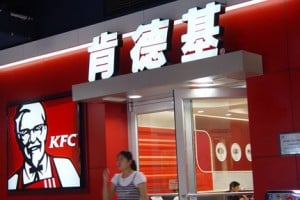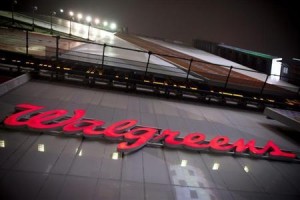Bloomberg Business Week featured KFC, a Yum brand restaurant, in two recent articles focusing on the brands Chinese storefronts. KFC, a household name in US fast food chains, has been suffering in several different aspects. Originally tied with the name “Kentucky Fried Chicken”, KFC has evoked feelings of unhealthiness with US consumers for years, and has suffered sluggish sales. However, the chains crowning glory has been KFC China which has been a start for Yum brands and been increasingly profitable.
Recently, however, KFC China has suffered from image issues and quality problems, and therefore there sales in China have been dipping. For KFC in the past, unhealthiness was not as much of an issue for its Chinese counterpart, because it brought a unique competitive advantage: its traditional American menu. KFC China took a different approach that may have ruined that competitive advantage, by trying to adapt the menu to the Chinese audience and adding traditional Chinese fare. So far it appears that this was not a wise choice, and consumers are left wondering what happened to their beloved American food. KFC needs to reassess their product design to match the wants of the Chinese customer base.
On top of this reconstructed image issue for KFC China, what may have been even more damaging was quality control issues. A history of poor quality issues can be severely damaging to a brand, especially one associated with the food industry. Consumers take extra precautions with what they are putting into their bodies, so when news of KFC chicken containing “unacceptably high levels of antibiotics” the chain suffered. This on top of already high concerns dealing with avian flu, made Chinese consumers even more skeptical about consuming this product. This illustrates, how damaging a quality issue can be for a brand, as discussed in Chapter six.
KFC China had been so successful in the past, that Yum has considered completely selling the United States stores in order to focus on those abroad that were growing at a much faster rate. However, if they continue to have these image and quality issues in China, getting rid of US stores may be a poor choice. If KFC abandons its US stores, does that destroy its image of being a classic American restaurant even further? Only time will tell what happens to this brand, but it is crucial that Yum and KFC managers assess this project.
What are your thoughts on KFC and KFC China?
Questions for discussion:
1. Should KFC focus on one brand or the other? Or continue with both?
2. How should a major fast food brand adapt to international markets? Maintain their original image, or add traditional food, specific to the location?
3. Where to you see Yum and KFC moving in the future?
Article Links:
http://www.businessweek.com/articles/2013-05-14/should-kfc-rethink-its-china-strategy

